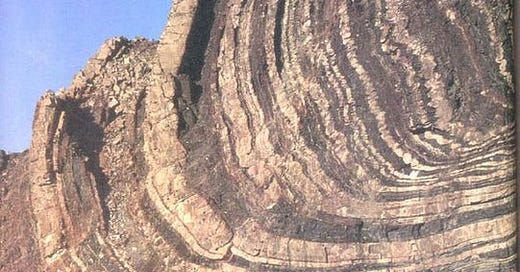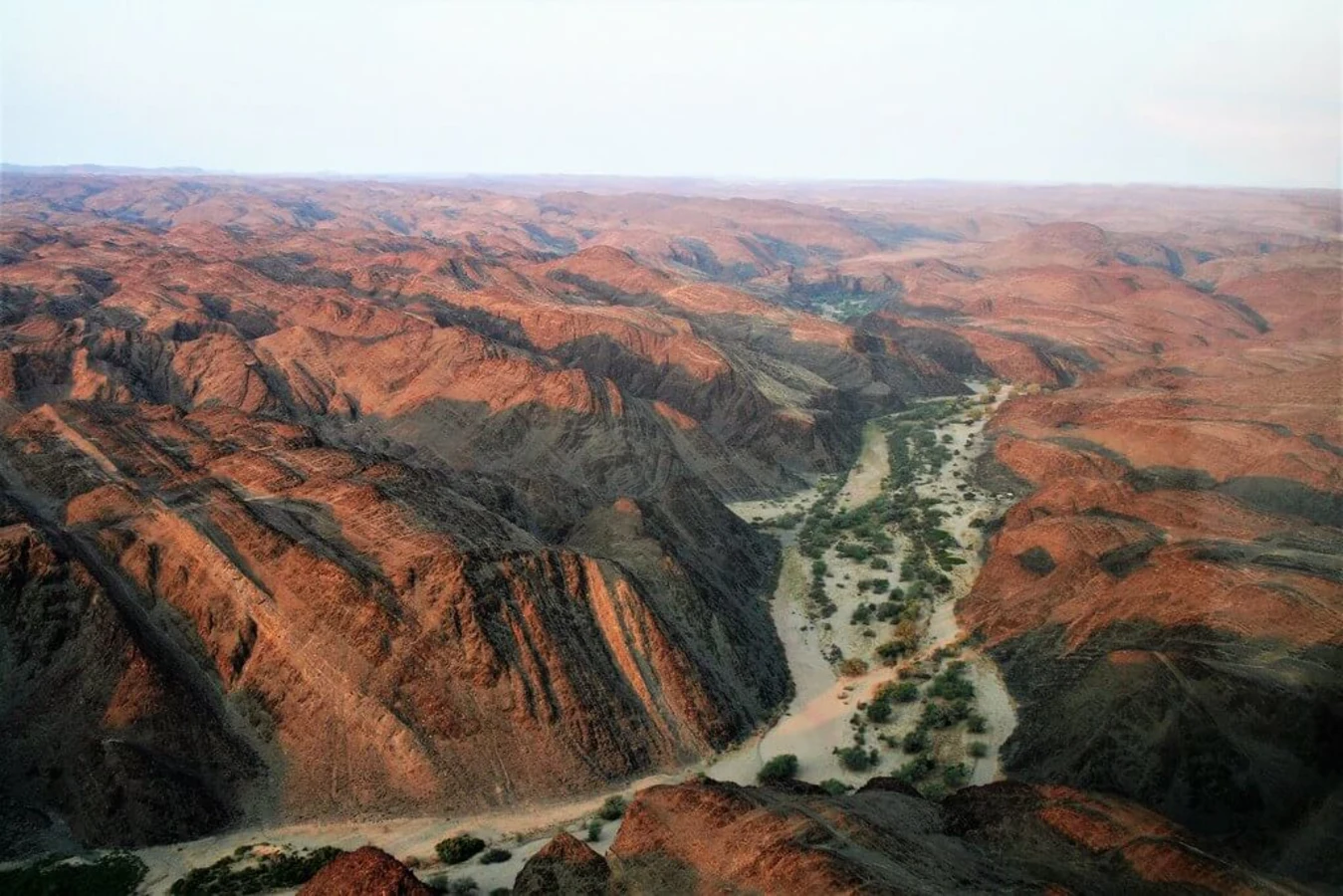Introduction
The Ugab River Valley, situated in the rugged and picturesque Damaraland region of Namibia, stands as one of the most fascinating geological landscapes on Earth. Renowned for its striking folds in sedimentary rock layers, this valley serves as a living chronicle of Earth’s tectonic and environmental history, offering both scientists and visitors a rare glimpse into the planet’s dynamic past.

Unique Geological Features
Striking Folds in Sedimentary Rocks
One of the most captivating aspects of the Ugab River Valley is the massive folds in its sedimentary rock formations. These folds were formed over millions of years due to intense compressional forces during tectonic activity.
- Formation Process: The folds are believed to have emerged during the late Proterozoic to early Paleozoic era, when ancient tectonic plates collided, creating immense pressure that deformed the horizontal layers of sedimentary rock into their current shapes.
- Types of Folds: The valley showcases a variety of fold structures, including anticlines, synclines, and chevron folds, which provide a textbook example of geological deformation processes.
- Scientific Value: These structures not only reveal tectonic activity but also serve as records of ancient environmental conditions, such as sediment deposition patterns, sea level changes, and erosion rates.

The Role of the Ugab River
The Ugab River, which flows intermittently through the valley, has played a crucial role in shaping the landscape. Over millennia, the river carved through rock layers, exposing the intricate folds and creating a dramatic canyon-like environment.
- Erosion and Exposure: The river’s erosive action has brought hidden geological formations to the surface, offering a rare opportunity to study deeply buried rock layers.
- Desert Oasis: Despite its arid surroundings, the Ugab River occasionally supports vegetation and wildlife, contributing to the valley’s ecological significance.

Cultural and Historical Connections
Ancient Human Presence
Archaeological evidence suggests that the Ugab River Valley has been home to human populations for thousands of years. Ancient rock art and tools discovered in the area indicate that early inhabitants utilized the valley as a shelter and resource hub.
- San Rock Art: The valley features petroglyphs and paintings created by the San people, illustrating their relationship with the environment and wildlife.
- Cultural Heritage: These artifacts reflect the cultural and spiritual significance of the valley to ancient communities.
Local Myths and Legends
The valley’s striking geological formations have inspired myths among indigenous groups. Some believe the folds resemble the ribs of a giant serpent, while others see them as the remnants of battles between mythical beings. These stories add a layer of mystique to the valley’s natural grandeur.

Scientific and Tourism Significance
A Geologist’s Paradise
The Ugab River Valley is a hotspot for geological research, providing insights into:
- The movement of ancient supercontinents.
- The nature of sedimentary rock formation under extreme pressure.
- The impact of climatic shifts on geological structures.
A Magnet for Adventurers
Tourists flock to the valley to marvel at its unique geological features and enjoy activities like:
- Guided geological tours.
- Hiking and photography.
- Wildlife spotting, including desert-adapted elephants and oryx.
Conservation and Sustainability
Protecting a Geological Treasure
The Ugab River Valley faces threats from erosion, unregulated tourism, and climate change. Efforts to preserve its geological and ecological integrity include:
- Designating the area as a protected site.
- Educating visitors on sustainable practices.
- Encouraging community involvement in conservation efforts.
Balancing Development and Preservation
While tourism brings economic benefits, careful management is essential to prevent damage to the valley’s delicate formations and ecosystems. Collaborative efforts between scientists, local communities, and the government aim to ensure the valley’s future.

Conclusion
The Ugab River Valley is more than just a geological wonder—it is a window into Earth’s ancient past, a sanctuary for cultural heritage, and a source of inspiration for scientists and adventurers alike. As we uncover more about its history and significance, it becomes ever more critical to preserve this extraordinary site for future generations.

